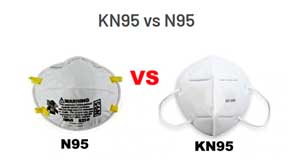What We Value:
HONESTY | RELIABILITY | TRANSPARENCY
Personal Protective Equipment (PPE) refers to protective clothing, helmets, gloves, face shields, goggles, facemasks and/or respirators or other equipment designed to protect the wearer from injury or the spread of infection or illness.
All personal protective equipment (PPE) that is intended for use as a medical device must follow The FDA’s regulations and should meet applicable voluntary consensus standards for protection. This includes surgical masks, N95 respirators, medical gloves, and gowns. The consensus standards and the FDA’s requirements vary depending on the specific type of PPE. When these standards and regulations are followed, they provide reasonable assurance that the device is safe and effective.
Over the past few decades, both for budgetary and efficiency reasons, healthcare organizations — just like most other sectors of the economy — adopted a “just in time” approach to ordering supplies. The Covid-19 Virus changed this approach for purchasing managers.
Sterling Global Distribution Co. has partnered with an international import / export company to provide PPE on a global platform.
Our Advantages:
- We are direct to manufacturers and large distribution facilities;
- We have access to a global supply chain;
- We can supply quantities of all sizes;
- We have operations in the following regions:
- United States
- Mexico
- Dubai
- South America
- India
- Hong Kong
- China
To the point, N95 masks are the US standards for respirator masks; KN95 masks are the Chinese standards for masks. According to mask manufacturer 3M, “it is reasonable to consider” China’s KN95s “equivalent” to US N95s. Mask standards for Europe (FFP2), Australia (P2), Korea (KMOEL), and Japan (DS) are also highly similar.
Global Mask Certifications:
- N95 (United States NIOSH-42CFR84)
- FFP2 (Europe EN 149-2001)
- KN95 (China GB2626-2006)
- P2 (Australia/New Zealand AS/NZA 1716:2012)
- Korea 1st class (Korea KMOEL – 2017-64)
- DS (Japan JMHLW-Notification 214, 2018)
Most users care more about what percentage of particles the masks capture. On this metric, N95 and KN95 respirator masks are the same. Both masks are rated to capture 95% of tiny particles (0.3 micron particles, to be exact).
However, other differences include:
- To be certified as a KN95 mask, the Chinese government requires the manufacturer to run a special mask fit test on real humans with ≤ 8% leakage. The N95 mask standard does not require manufacturers to run fit tests. This does not mean that fit tests aren’t helpful. Many hospitals and companies require their workers to be fit-tested. However, those are requirements of companies themselves, not for the US NIOSH certification on the mask.
- N95 masks have slightly stricter requirements for pressure drop while inhaling. That means they are required to be slightly more breathable than KN95 masks.
- N95s also have slightly stricter requirements for pressure drop while exhaling, which should help with breathability.
| Type | Specs | Use | Style |
|---|---|---|---|
| Surgical masks | Protect against large droplets and splashes (does not require fit-testing) | Working with live animals; working with infectious material in BSL-2+ level labs but only protects your sample from you, not the other way around. |  |
| N-95 / KN-95 respirators | Protects against dusts, fumes, mists, microorganisms (requires fit-testing) | Working with live animals or infectious materials in BSL-2 level labs with known airborne transmissible disease (e.g. tuberculosis, also required for influenza (flu)); dusty environments) |  |
Nitrile gloves are the most recognized and popular PPE gloves. They are made of synthetic rubber, which means that even if the glove wearer isn’t allergic to Latex, it still might be a good idea to switch to Nitrile. For example, even if a tattoo artist doesn’t have a Latex allergy, one of his customers may.
Nitrile is also stronger than Latex – in fact, it’s up to 3 times more puncture resistant! Although you give up some strength and flexibility with Nitrile, it’s much more puncture-resistant than natural rubber gloves. And when you’re dealing with sharp needles, you don’t want to take any chances.
Due to improved manufacturing techniques, Nitrile is closing the gap significantly with Latex when it comes to comfort and dexterity.
It used to be that there was a big difference in tactile sensation between Nitrile and Latex gloves. While that is still partially true, manufacturing techniques continue to improve, and the difference between Latex and Nitrile isn’t as great as it once was.
Nitrile gloves are more puncture resistant. Latex does little to protect the skin in contrast with the puncture resistance achieved by nitrile gloves. Whereas Latex can rupture when used too roughly or by snagging on a piece of equipment. Nitrile is more durable and thus achieves a higher level of barrier protection.
Individuals who are prone to allergies often find themselves irritated by Latex. In fact, Latex allergies are so common that FDA even issued a recommendation for medical suppliers to label products according to their Nitrile vs. Latex make-up.
Latex gloves are available in a variety of sizes, so their fit is somewhat customizable. That said, the material is non-conforming. Regardless of wear duration, Latex gloves will never fully mold to your hand. As compared to Nitrile gloves, where they form to the wearer because of its unique memory membrane … unlike Latex. The result is a more comfortable fit. And, with reduced slipping, sticking or other nuisances typically caused by Latex gloves. Nitrile may also protect against hand fatigue.
| Type | Specs | Use | Style |
|---|---|---|---|
| Light latex, vinyl or nitrile gloves | Disposable latex (powdered or unpowdered) | Working with biological hazards (human blood, body fluids, tissues, bloodborne pathogens, specimens), BSL1, BSL2, BSL2+, BSL3 |  |
| Light latex, vinyl or nitrile gloves | Disposable nitrile (puncture and abrasion resistant, protection from splash hazards) | Disposable nitrile (puncture and abrasion resistant, protection from splash hazards) |  |
| Light latex, vinyl or nitrile gloves | Disposable vinyl (economical, durable, similar to latex) | Working with biological hazards, BSL1, BSL2, BSL2+, BSL3 |  |
| Light chemical resistant gloves | Natural rubber latex (chemical resistant, liquid-proof) | Working with small volumes of corrosive liquids, organic solvents, flammable compounds | |
| Light to heavy chemical resistant gloves | Nitrile (chemical resistant, good puncture, cut and abrasion resistance) | Using apparatus under pressure, air or water reactive chemicals |



